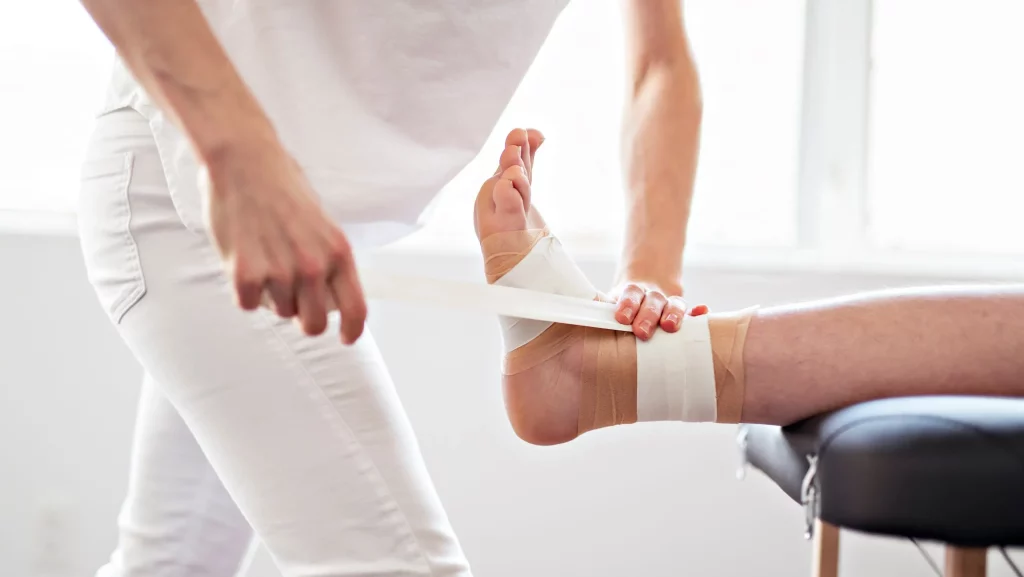FREE Shipping on Orders over $89 with Account – Create One Today!
- (844)-859-9400
- Get Help

Medical tape can be a real lifesaver when it comes to first aid and wound care. It might seem simple, but using medical tape the right way can do wonders in terms of boosting healing and keeping you comfortable.
There are plenty of different types of medical tapes to choose from, each with its own purpose. Understanding these can help you choose just the right tape for your needs.
Medical tape plays a crucial role in everything from treating small cuts to helping patients recover from major surgeries. Understanding how medical tape works can help you use it more effectively for your own care or when helping others.
At its core, medical tape has three main jobs:
But not all medical tapes are the same. There’s actually a wide variety available, each designed for specific needs.
When you are choosing between different types of medical tape, it’s important to take into account the following factors:
If you’re unsure about which type to use, don’t hesitate to ask a healthcare professional. They can guide you to the best choice for your specific needs.
The sections below cover some of the most popular types of medical tape, along with their common uses.
Think of this as the strong and durable type. Cloth tape is great for holding dressings in place, especially in areas that move a lot. The fabric material is flexible but also sticks well to your skin, making it perfect for active areas or when you need a secure hold. The 3M Medipore Soft Cloth Tape is an example of this.
Paper tape is gentle on your skin and lets it breathe. If you have sensitive skin or need to change your dressing often, paper tape is your friend. It’s easy to tear and put on, which is a big plus when you’re dealing with delicate areas. One of our favorites in this category is the 3M Micropore Paper Tape.
As the name suggests, you can see through this tape. It’s really useful when you need to keep an eye on the area underneath, like around an IV. It molds to your body shape and sticks well without being harsh on your skin.
Foam tape is great for padding and protecting, especially if you have a bulky dressing or need to secure a medical device comfortably. It moves and stretches with your skin, too.
Self-adhering tape does not adhere to skin but to itself. It’s perfect for wrapping around joints or areas with hair because it won’t pull or stick where you don’t want it to.
Applying medical tape might seem simple, but doing it right can make a big difference in your comfort and healing. Let’s walk through the process together:
Here are a few tips for how to apply medical tape to certain areas that can be tricky or might require extra consideration:
Watch for reactions. If you notice any redness or irritation, remove the tape right away and give your skin a break. Contact a medical professional for further instruction.
It’s a common question: “Can I shower with my medical tape on?” The answer isn’t a simple yes or no – it depends on the type of tape you’re using.
Some tapes, like Hypafix Retention Tape, are designed to be water-resistant. This means you can shower, swim, or sweat without worrying too much. But other types, such as cloth or surgical tape, aren’t made to handle water and might come loose when wet.
Self-adhering wraps and tapes tend to do better in wet conditions compared to traditional medical tapes. If you’re using regular medical tape, it might not hold up well in the shower.
If you need to shower with tape that isn’t water-resistant, here’s what you can do:
After you get out of the shower, gently pat the taped area dry. Don’t rub, as this might loosen the tape. Then, take a look at the tape. If it’s peeling or doesn’t seem sticky anymore, it might be time to replace it.
The following steps will help your medical tape last longer and work more effectively, ensuring better care for your skin and wound:
Knowing when to replace your medical tape is crucial for proper care and healing. Here are some key signs to watch for:
For wounds, change the tape when you change the dressing. This keeps the area clean and promotes healing. If you’re using tape for support (like for a sprain), replace it daily or when it loses stickiness. This ensures it continues to provide effective support.
Using the right medical tape correctly can make a real difference in your care and comfort. Remember, if you’re unsure about which tape to use or how to use it, it’s best to ask a healthcare professional. They can guide you based on your specific needs.
Medical Monks has a wide selection of medical tapes and supplies in stock, and our professionals are available to guide you. Don’t hesitate to reach out if you need help or supplies.

Edited for content by JORDAN GAYSO.
